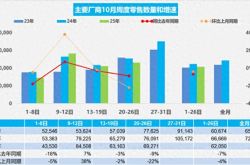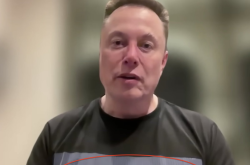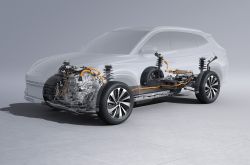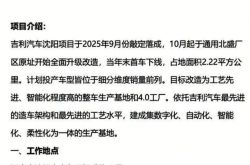Reevaluating vivo's Leap into Robotics
![]() 04/03 2025
04/03 2025
![]() 667
667
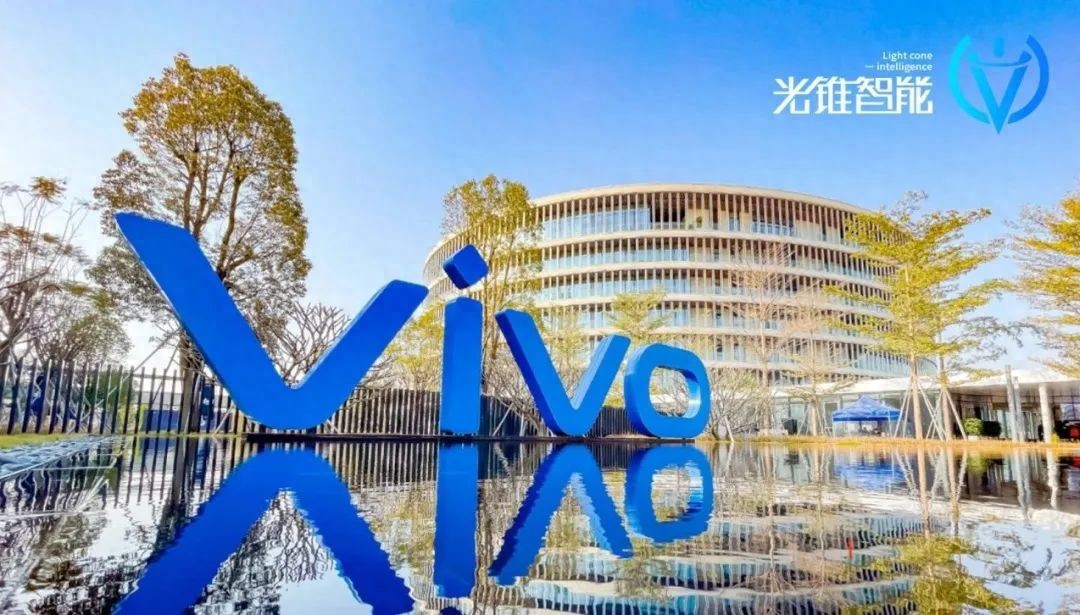
In 2025, vivo reoriented its strategy, aiming for a fresh direction in AI.
Just six months ago, vivo's R&D team was still based in an office in Futian, Shenzhen, fine-tuning AI algorithms to automate restaurant bookings. As one of the mobile phone manufacturers with the highest publicly disclosed investment in AI, vivo firmly believed that smartphones were the optimal platform for AI applications. This conviction led vivo to launch various large AI models and AI agents tailored for mobile devices.
Now, however, vivo is stepping out of the "mobile-centric bubble."
In late 2024, Hu Baishan, Executive Vice President, Chief Operating Officer, and Dean of vivo Central Research Institute, revealed in an interview that vivo's MR R&D team had expanded to 500 members and planned to launch high-fidelity prototypes in over ten cities nationwide for user testing in September 2025.
This year in March, according to LeiPhone, vivo consolidated its AI-related organizational structure. An AI field was established under the existing OS product area, with AI Department 1 and AI Department 2 reporting to it. Zhang Fei, former general manager of the Internet platform operation area, was appointed as the general manager of the AI field, concurrently overseeing AI Department 1, without a probation period, and directly reporting to Zhou Wei, vice president of the company and head of the OS product area.
vivo's organizational reshuffle aimed to dismantle the "departmental silos" in AI applications.
On March 25, Hu Baishan announced at the Boao Forum for Asia that vivo had established a robotics lab, marking its official entry into the robotics industry. Leveraging its expertise in large AI models, imaging, and spatial computing in MR, vivo will focus on developing the "brain" and "eyes" of robots.
"Robots represent the future of the mobile phone industry, serving as a bridge connecting the physical and digital worlds."
As Hu Baishan noted, vivo's transition from mobile phones to MR and now robots reveals a clear technological evolution path, accompanied by a profound understanding of its positioning within these vastly different product categories.
vivo's technological advancements in AI and MR have prompted the market to reconsider its labels.
For a long time, vivo has been perceived as a youthful brand focused on the lower-tier market with strong channel capabilities. In recent years, amidst the buzz around large AI models and car manufacturing, vivo's technological prowess was primarily recognized in the imaging field, where all mobile phone manufacturers compete fiercely.
It's well-known that the Chinese mobile phone market is fiercely competitive, with manufacturers vying for even a 1% market share. Can market operations alone account for vivo's four consecutive years as the top domestic mobile phone brand? Clearly, there's more to the story.
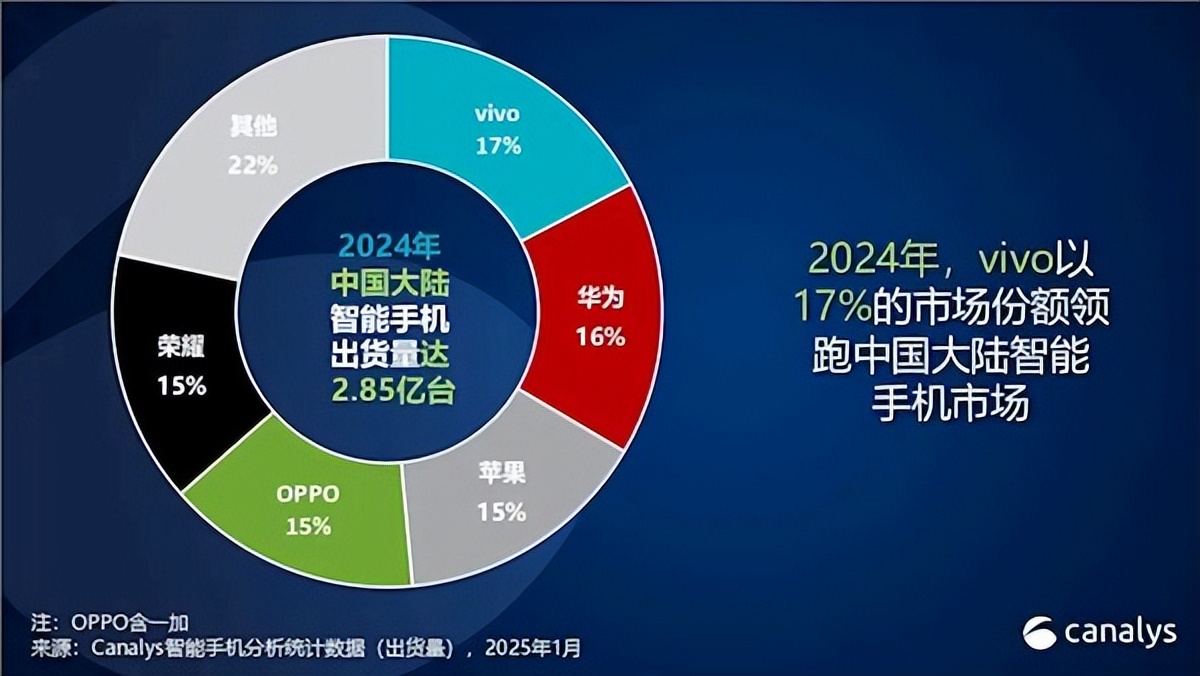
Perhaps for vivo, entering the robotics field with a high profile is simply another way to emphasize its technological prowess. According to vivo's product timeline, it expects to take three to five years to create a prototype, with a formal launch of a household robot potentially taking over a decade.
Nonetheless, the changes indicate vivo's determination to transcend mobile phones and create more hardware platforms for the AI era. From "making machines" to "making minds," it's time for the market to reassess vivo's technological value.
Robots: vivo's next decade-long venture?
If there were a "must-invest" list for technology companies in 2025, robots would undoubtedly make the cut.
vivo's official announcement of entering the robotics field can be summarized in two points: Firstly, vivo does not currently intend to conduct full self-research and development across the entire robotics sector. Its current R&D focus is on the cognitive aspects of robots – "brain + eyes." Secondly, unlike most market robots designed for industrial manufacturing, education, and other ToB applications, vivo's robots are clearly targeting the consumer market, aiming to create robots for personal and household scenarios.
vivo's robotics project is still in the initial stages of internal approval.
Regarding specific R&D directions and timelines, vivo has set relatively "lenient" expectations. According to recruitment website postings, vivo is actively seeking talents in the robotics field and hopes that "industry leaders" can personally helm the teams. Positions in demand include Chief Scientist of Robotics, Robotics Technology Planning Expert, etc., offering salaries of up to one million yuan.
Regarding the product launch timeline, Hu Baishan's plan is to "gradually break through and lay the groundwork." For specific scenario needs, vivo may introduce robot products tailored to specific functions. However, to produce a highly functional and versatile robot "prototype," vivo anticipates it will take three to five years, with a formal launch of the ideal product potentially taking over a decade.
This essentially amounts to vivo announcing a "ten-year plan." Before officially forming an R&D team, there are considerable variables for vivo's robots.
The household robot sector alone encompasses subcategories such as cleaning robots, companion robots, educational robots, healthcare robots, etc. Corresponding mature products providing specific services include sweeping robots, AI toys, large model learning machines, etc. This sector has long been fiercely competitive.
If versatility is considered, it implies that vivo might develop the most advanced humanoid robots in the industry. Judging from the performance of the product launched by 1X Technologies, a company NVIDIA partnered with at GTC this year, current humanoid household robots can only hand clothes to people and assist with dishwashing. In terms of cognitive ability, Figure, invested by OpenAI, has initially achieved a breakthrough in the generalization ability of the robot's "brain" in the laboratory.

Image: NEO Gamma robot from 1X Technologies handing clothes to NVIDIA CEO Jen-Hsun Huang Source: Company website
However, from vivo's perspective, these variables can be viewed in the long term.
Firstly, vivo has the requisite technological reserves for the robot's "brain and eyes." Relying on the "Blue Heart Large Model" and years of imaging expertise, vivo mobile phones can "recognize and understand" objects in captured images. vivo does not need to develop robot-related technologies "from scratch."
Secondly, the demand for household robots indeed needs about a decade to cultivate. As Hu Baishan stated in an interview at the end of 2024, "The need for (humanoid robots) is clear, as social aging becomes increasingly severe."
According to the forecast in the "Humanoid Robot Industry Research Report" by the China Academy of Information and Communications Technology, from now to 2028, the market size of China's all-round humanoid robots will be approximately 2 to 5 billion yuan. From 2028 to 2035, humanoid robots will gradually be implemented in industrial scenarios, with the market size of the entire sector reaching approximately 5 to 50 billion yuan. From 2035 to 2040, robots will start to be implemented in service scenarios, with the market size of the entire sector reaching approximately 100 to 300 billion yuan. Before the market demand explodes, vivo has ample time to "steadily progress."

Image: Forecast of China's population age structure in 2025 Forecast data based on "World Population Prospects 2024 Revision"
Perhaps for a considerable period in the future, we won't witness substantial progress in vivo's robots. However, those familiar with vivo's investment style understand that, guided by the "culture of duty," vivo's approach to R&D has always been "few bets, but heavy when placing them."
"Artificial intelligence is the most fundamental technology among all technological innovations, and for the foreseeable future, we should invest 'oversaturatedly' in it."
As emphasized by Shen Wei, the founder, president, and CEO of vivo, when AlphaGo shook the industry in 2017. vivo has invested in AI for 8 years and now possesses a suite of capabilities including large AI models, MR, AI-optimized operating systems, and AI imaging.
The official announcement of investment in robots represents vivo's choice of development direction for the next decade.
Not fond of chasing trends, vivo has patience with technology
In the technological cycle of the mobile phone industry, vivo is not keen on "chasing trends."
For a long time, vivo has been perceived as a mobile phone brand excelling in offline channel operations, primarily targeting the lower-tier market and young users, with a focus on fashion and imaging.
Looking back at the trends pursued by mobile phone manufacturers in recent years, vivo has always maintained a low profile.
For instance, when other mobile phone manufacturers ventured into the smart car sector, vivo also conducted research on the automotive supply chain in 2020. After assessing that the technology reusability was only 10%, vivo decisively abandoned the idea of deep investment and instead focused on improving the interconnection between mobile phones and in-car systems to enhance its users' intelligent automotive experience.
At the vivo Developer Conference in 2024, when Lightcone Intelligence inquired about vivo's specific showcase of its cooperation with Leap Motor, a staff member explained, "We have in-depth cooperation with Leap Motor on in-car systems mainly because many car users are also our users."
Over the past decade, vivo has actually introduced several innovative products. For example, in 2018, vivo launched the vivo APEX, which integrated a series of aggressive technological solutions such as screen speakers and under-screen cameras. vivo hoped to use this cutting-edge product to dispel the market's perception that vivo "only talks about" music, photography, and thinness.
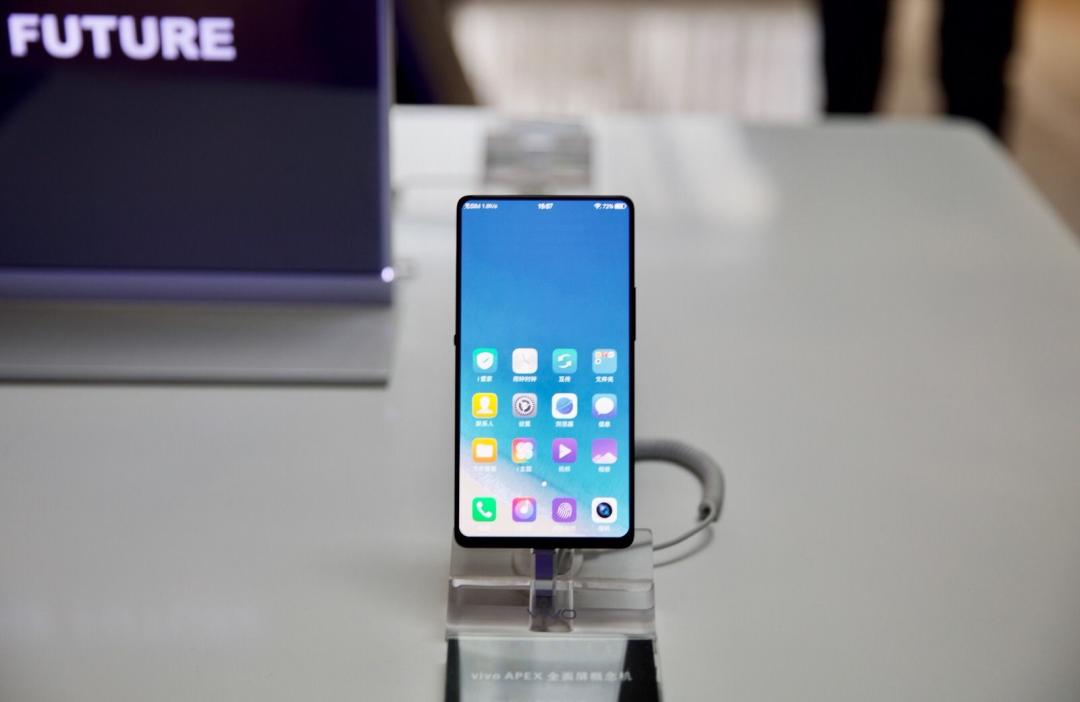
Image: vivo APEX Source: Internet
From this endeavor, vivo also recognized the costs of being aggressive. While a "true" full-screen display can enhance visual effects, it's difficult to create brand differentiation based on this alone. Most critically, to accommodate under-screen cameras and other accessories, the screen resolution needs to be reduced, and the "sensor size" of the rear camera cannot be too large.
In the conflict between product and concept, vivo realized that stacking parameters and technology cannot directly achieve premiumization. After much deliberation, vivo did not want to abandon the barriers the brand had already built for cutting-edge technology.
Subsequently, vivo realigned its product strategy and R&D direction, outlining four major goals in 2019: design, imaging, system, and performance. Beyond specific parameters and quantitative indicators, vivo began pursuing results that require extreme patience to cultivate.
The most notable example is vivo's self-developed operating systems. Currently, vivo has two operating systems, Origin OS and Lanhe OS, applied to mobile phones and wearable products, respectively. In terms of underlying logic, vivo has reconstructed both systems using AI, and both have a series of toolchains and software stacks specifically optimized for system performance. The difference between the two is that Lanhe OS, written by vivo in Rust, is an operating system that emphasizes security and is tailored for distributed hardware.
"Lanhe is still not perfect and currently has no plans for mobile phone use, but I believe it will be widely adopted in the future." A vivo system developer shared this vision with Lightcone Intelligence. vivo also harbors ambitions similar to Huawei's HarmonyOS.
Regarding vivo's investment in large AI models, as vivo Vice President Zhou Wei once quoted the concept of "first be invincible" from "The Art of War," "We're not saying we must develop certain functions, modules, or products, but rather to seize this trend, akin to the hundred-year changes brought by steam and electricity, and make saturated investments in advance."
Patience with technology has also allowed vivo to develop a unique communication style distinct from other mobile phone manufacturers. This explains why vivo frequently uses the concepts of "users" and "experience" in press conferences and internal discussions.
"From a user experience perspective, the capability of large AI models represents a gradual improvement for smartphones, not a 0-to-1 leap. AI's driving force for the overall phone replacement trend is not significant and cannot drive a 0-to-1 experience enhancement for users."
As Hu Baishan noted, regarding the AI narratives spun by mobile phone manufacturers in 2024, vivo has always been aware. The competition in AI is essentially a marathon, and there's no illusion that AI will save the mobile phone industry. All technological investments will yield appropriate returns at the right time.
Since 2019, vivo's annual R&D expenses have consistently exceeded 10 billion yuan. As of October 2024, vivo's investment in the AI field had surpassed 23 billion yuan, and the number of R&D personnel in the AI Research Institute had increased from 1,000 in 2019 to over 2,000. By the end of last year, vivo's MR R&D team had also grown to 500 members.
In this journey, vivo has quietly ascended to the top position in mobile phone sales. From 2021 to 2024, vivo has been the best-selling domestic mobile phone brand in China's smartphone market for four consecutive years. Although the mobile phone market is fiercely competitive, and there's not much difference between manufacturers, a 1% lead speaks volumes.
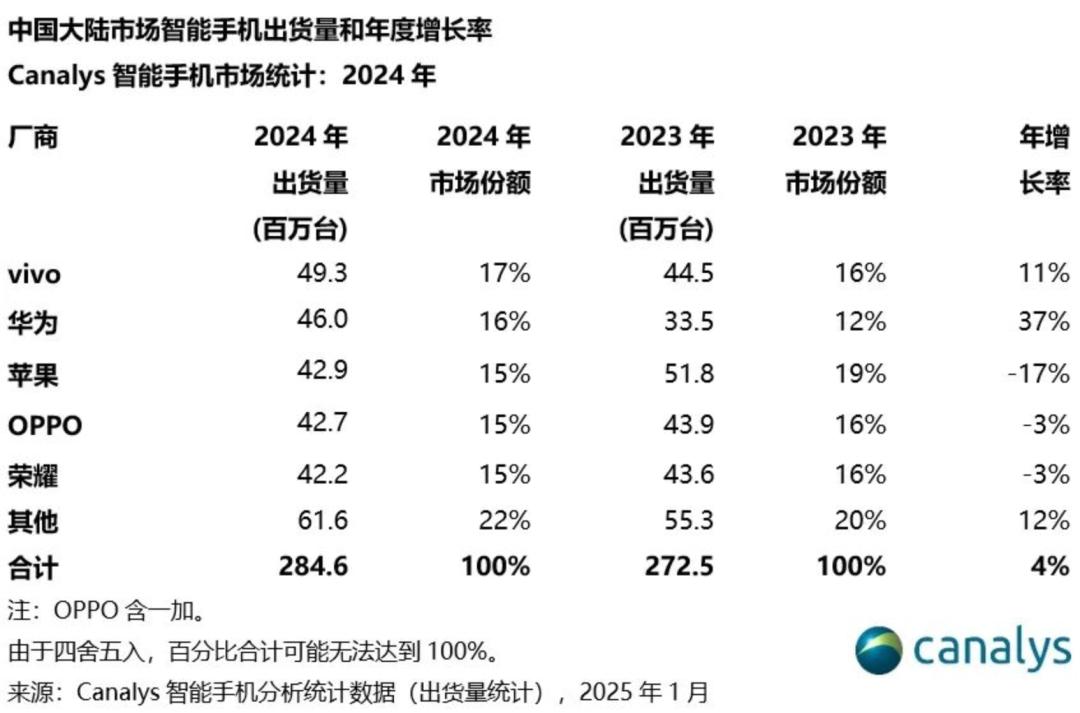
This year marks the 30th anniversary of vivo's establishment. In his New Year message, Shen Wei refrained from discussing plans, performance metrics, or technological research and development aspirations. Instead, he chose to delve into the "dreams and passions" of vivo's users.
Perhaps, in these three decades, vivo's core essence remains unchanged. What has evolved is its journey from being a sole mobile phone manufacturer to embracing a broader spectrum of intelligent hardware solutions.


